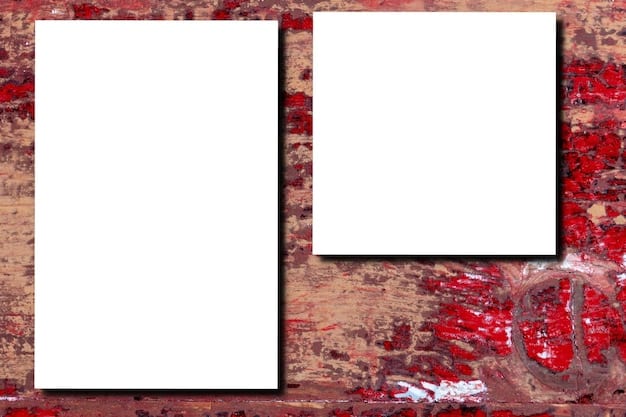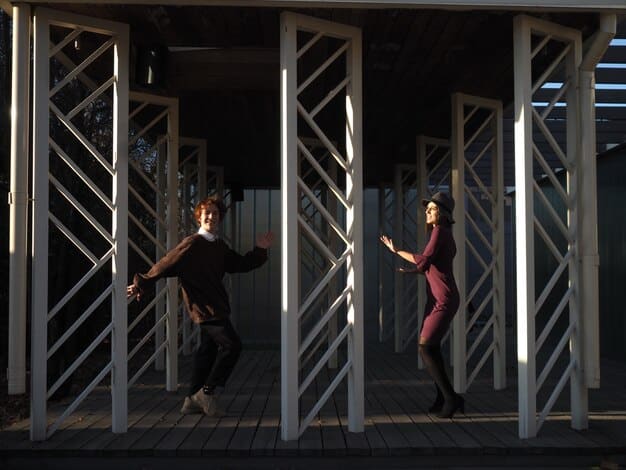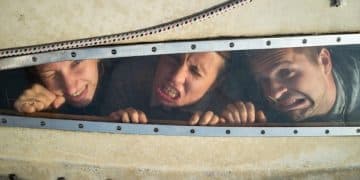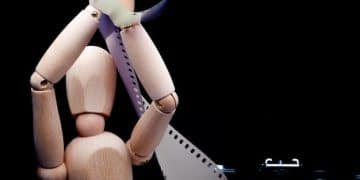Director’s Cut Dilemma: Are Extended Movie Versions Really Better?

The Director’s Cut Dilemma explores whether extended versions of movies truly offer a superior cinematic experience, analyzing audience reception, critical reviews, and the director’s intent in 2025 to determine if bigger always means better in the world of film.
The age-old debate rages on: does more screen time automatically equate to a better movie? In the world of cinema, the Director’s Cut Dilemma: Are Extended Versions of Movies Really Better? A 2025 Analysis delves into this very question, examining whether these enhanced editions truly elevate the viewing experience or merely add superfluous content.
The Allure of the Director’s Cut
The director’s cut. It’s a phrase that piques the interest of cinephiles and casual moviegoers alike. But what exactly is it, and why does it hold such a fascination? Often touted as the definitive version of a film, the director’s cut promises a glimpse into the filmmaker’s true vision, uncompromised by studio demands or time constraints. But does that promise always translate into a superior viewing experience?
The allure stems from the idea of authenticity. We crave access to the artist’s purest expression, the untainted narrative that existed before marketing executives and test audiences shaped the final product. The director’s cut, in theory, offers just that: a chance to see the film as the director truly intended.
What Defines a Director’s Cut?
A director’s cut isn’t simply a longer version of a movie. It represents a fundamental shift in creative control, allowing the director to re-edit, add scenes, and tweak the overall pacing to align with their original artistic vision. This can result in significant changes to the narrative structure, character development, and thematic elements.
The Promise of Uncompromised Vision
The promise of a director’s cut is potent: a movie freed from the constraints that plagued its theatrical release. Whether it was studio interference, concerns about runtime, or the need to appeal to a broader audience, the director’s cut theoretically restores the film to its purest form.
- More Detailed Character Arcs: Extended scenes often provide greater depth to character development, allowing viewers to connect with the characters on a more profound level.
- Deeper Thematic Exploration: The director’s cut may restore scenes that delve deeper into the film’s underlying themes, enriching the overall message and impact.
- Improved Pacing and Narrative Flow: By re-editing the film, the director can refine the pacing and create a more seamless and engaging narrative flow.
- Restored Scenes and Dialogue: Deleted scenes, often cut for time or content, can be reinstated, adding crucial context or nuance to the story.
Ultimately, the allure of the director’s cut lies in the potential for a more complete, authentic, and satisfying cinematic experience. However, that potential isn’t always realized, and the results can be surprisingly mixed. The added scenes don’t always justify the longer running time.
Case Studies: Director’s Cuts That Worked (and Didn’t)
The track record of director’s cuts is far from uniform. While some have been hailed as improvements over the theatrical versions, others have been met with indifference or even derision. Examining specific examples reveals the complexities and potential pitfalls of these extended editions.
Identifying the factors that contribute to a successful director’s cut requires careful analysis. Was the added content essential to the narrative? Did it enhance the character development or thematic resonance? Or did it simply pad the runtime without adding significant value?

Notable Successes: Finding the Missing Pieces
Some director’s cuts have achieved legendary status, becoming the definitive versions of their respective films. These successes often involve restoring crucial scenes that were inexplicably cut from the theatrical release, adding layers of meaning and enhancing the overall impact.
**Blade Runner: The Final Cut** is a prime example. Ridley Scott’s meticulous restoration eliminated studio-imposed narration and clarified the ambiguous elements surrounding Deckard’s identity, resulting in a more coherent and thought-provoking film. This cut is widely considered superior to the original.
- The Abyss: James Cameron’s director’s cut restored a crucial tidal wave sequence, adding a significant layer of environmentalist commentary to the film.
- Daredevil: The director’s cut of Daredevil added crucial character development and shifted the tone to be darker and more aligned with the source material.
- Kingdom of Heaven: Ridley Scott strikes again, making his director’s cut of Kingdom of Heaven a sweeping epic, providing context and depth missing in the theatrical cut.
When More Isn’t Better: The Pitfalls of Excess
Not all director’s cuts are created equal. In some cases, the added footage merely clutters the narrative, disrupts the pacing, and ultimately detracts from the overall viewing experience. Sometimes, the studio made cuts for good reason.
The director’s cut of **Superman II** is widely regarded as inferior to the theatrical release. Richard Donner’s version, while intriguing from a historical perspective, suffers from uneven pacing and a lack of narrative focus. The Salkind/Lester version moved at a quicker pace.
- Payback: Straight Up: The straight up version of Payback featured a gritty edge that was ultimately discarded from the theatrical release but ultimately felt more incomplete.
- Star Wars: Special Editions: While not director’s cuts per se, George Lucas’s special editions added CGI effects and scenes that were widely criticized by fans for detracting from the original’s charm.
- Once Upon a Time in America: While Sergio Leone had wanted to make a longer movie, the studio cuts the picture to something more manageable – with some viewers finding the theatrical version to be perfect.
Ultimately, the success or failure of a director’s cut hinges on the quality and relevance of the added content. More isn’t always better; the key is to enhance the film’s artistic vision without sacrificing its narrative integrity. Pacing and narrative flow are important elements of filmmaking that can easily get lost in a director’s cut.
The Role of Studio Interference and Creative Control
The existence of director’s cuts often highlights the complex relationship between filmmakers and studios. Creative control is a constant tug-of-war, with studios prioritizing commercial viability and directors striving to realize their artistic visions. The director’s cut becomes a battleground where these competing interests clash.
Understanding the dynamics of studio interference is crucial for evaluating the merits of a director’s cut. Was the theatrical version heavily compromised by studio demands? Did the director have a clear vision that was suppressed during the initial editing process? The answers to these questions can shed light on the potential value of the extended edition.
The Studio Perspective: Balancing Art and Commerce
Studios are businesses, and their primary goal is to maximize profits. That often translates into making creative decisions that appeal to the broadest possible audience. This can lead to conflicts with directors who prioritize artistic expression over commercial considerations.
Examples of studio interference abound throughout film history. From forcing directors to shorten runtimes to altering endings to testing audience reception, studios frequently exert their influence over the final product.
The Director’s Vision: A Quest for Authenticity
Directors, on the other hand, often view their films as personal artistic statements. They strive to create a cohesive and meaningful narrative that reflects their unique vision. Studio interference can feel like a betrayal of that vision, compromising the integrity of their work.

The director’s cut becomes an opportunity to reclaim that authenticity, to present the film as it was originally conceived, free from the constraints of commercial pressures.
The director’s cut is ultimately a reflection of the power dynamics within the film industry. It represents a chance for directors to assert their creative control and offer audiences a glimpse into their true artistic vision. Understanding these dynamics is essential for appreciating the significance and potential impact of these extended editions.
Audience Reception and Critical Response to Director’s Cuts
How do audiences and critics receive director’s cuts? The response is often as varied and complex as the films themselves. While some director’s cuts are met with widespread acclaim, others are met with indifference or even hostility. Understanding these different reactions is critical to evaluating their overall impact.
Analyzing audience reviews and critical essays can reveal valuable insights into the strengths and weaknesses of director’s cuts. Do viewers appreciate the added scenes and extended runtime? Do critics find that the director’s cut enhances the film’s artistic merit? Or do these extended editions ultimately fall short of expectations?
The Fan Perspective: More of What They Love?
For many film fans, the prospect of a director’s cut is inherently appealing. They see it as an opportunity to delve deeper into the worlds and characters they already love, to experience a more complete and nuanced cinematic experience.
However, fan reception can be fickle. If the added content feels extraneous or undermines the original narrative, viewers may be disappointed. Authenticity in film is important to fans — they want to know that the director cared about the project, just as they do.
Critical Analysis: Evaluating Artistic Merit
Critics approach director’s cuts with a more analytical eye, evaluating their artistic merit and assessing whether the added content truly enhances the film’s overall quality. They consider factors such as pacing, narrative coherence, character development, and thematic resonance.
A positive critical response can significantly elevate the reputation of a director’s cut, cementing its place as the definitive version of the film. Conversely, negative reviews can diminish its appeal and reinforce the perception that the theatrical version is superior.
Director’s cuts represent a fascinating intersection of art, commerce, and audience expectation. While they offer the potential for a more complete and authentic cinematic experience, their success ultimately depends on the quality and relevance of the added content. A director’s cut that fixes plot holes or delivers a more satisfying conclusion is far more likely to be accepted by audiences.
The Impact of Streaming Services and Home Video on Director’s Cuts
The rise of streaming services and home video has profoundly impacted the availability and accessibility of director’s cuts. These platforms provide filmmakers with new avenues for releasing and distributing their preferred versions of films, bypassing the traditional constraints of theatrical distribution.
Exploring how these platforms have facilitated the dissemination of director’s cuts is crucial for understanding their current status in the film industry. Have streaming services become a haven for filmmakers seeking to showcase their uncompromised visions?
Streaming Services: A Platform for Extended Editions
Streaming services like Netflix, Amazon Prime Video, and Disney+ have become increasingly receptive to offering director’s cuts and extended editions of films. This allows them to cater to a niche audience of cinephiles while also providing added value to their subscription services.
The ease of access and global reach of streaming services have made director’s cuts more widely available than ever before, allowing audiences around the world to experience these enhanced versions of their favorite films.
Home Video: A Haven for Collectors and Enthusiasts
Home video formats like Blu-ray and 4K Ultra HD have also played a significant role in the popularization of director’s cuts. These physical media formats often include bonus features such as deleted scenes, behind-the-scenes footage, and director’s commentaries, providing viewers with a deeper understanding of the filmmaking process and the director’s artistic vision.
The collector’s edition box sets frequently feature director’s cuts which appeal to film enthusiasts who desire the most complete and comprehensive version of a film.
Streaming services and home video have effectively democratized access to director’s cuts, empowering filmmakers to reach a wider audience with their uncensored visions. This has led to a greater appreciation for the value of these extended editions and a more nuanced understanding of the art of filmmaking.
Looking Ahead: The Future of Director’s Cuts in 2025 and Beyond
What does the future hold for director’s cuts? As the film industry continues to evolve, it’s likely that these extended editions will play an increasingly important role in shaping the cinematic landscape. From technological advancements to shifting audience expectations, several factors will influence the future of director’s cuts.
Considering what factors will shape the evolution of director’s cuts and their impact on the way we experience and appreciate films is beneficial. And what technologies will be leveraged in that evolution?
Technological Advancements: Enhanced Viewing Experiences
Emerging technologies such as virtual reality (VR) and augmented reality (AR) could potentially revolutionize the way director’s cuts are presented and experienced. Imagine stepping inside a film and exploring its world from the director’s perspective, with interactive elements and personalized storylines.
These immersive technologies offer exciting possibilities for expanding the boundaries of cinematic storytelling and providing audiences with unprecedented levels of engagement. It is even possible that a viewer could “direct” their own cut of the film, selecting which scenes and versions they want to experience.
Shifting Audience Expectations: A Demand for Authenticity
As audiences become more sophisticated and discerning, they increasingly demand authenticity and originality in their entertainment. Director’s cuts offer a way for filmmakers to deliver on these expectations, providing viewers with a more genuine and uncompromised vision of their work.
The future of director’s cuts is bright, with technological advancements and shifting audience expectations paving the way for a new era of cinematic exploration. These extended editions will continue to challenge our perceptions of what a film can be, pushing the boundaries of storytelling and artistic expression. Filmmakers need to be wary of excessive alterations that do not positively add to the viewing experience.
| Key Point | Brief Description |
|---|---|
| 🎬 Director’s Vision | Director’s cuts aim to present the filmmaker’s original intentions. |
| ✂️ Impact of Cuts | Studio cuts can significantly alter a film’s narrative and themes. |
| 👍 Fan Opinion | Fan reception varies; some director’s cuts are beloved, others disliked. |
| 🖥️ Streaming Influence | Streaming services have made director’s cuts more accessible. |
FAQ
▼
A director’s cut is a version of a film that reflects the director’s original artistic vision, often differing from the theatrical release due to studio interference or time constraints. These cuts may include added or altered scenes.
▼
Not always. While some director’s cuts enhance a film, others may introduce pacing issues or unnecessary scenes. Quality is subjective and depends on the viewer’s preference and how well the edits are integrated.
▼
Studios often prioritize commercial viability and appeal to a broader audience. This can lead to cuts, revisions, or altered endings that the director may not agree with but which are believed to make the film more profitable.
▼
Streaming services have provided a platform for directors to release their preferred versions, bypassing traditional studio constraints. This has increased the availability and visibility of director’s cuts to a wider audience.
▼
Viewers should consider what they hope to gain from the experience. If seeking a deeper understanding of the director’s vision or enhanced character development, a director’s cut may be worthwhile. However, know that some cuts are not better.
Conclusion
In the end, the Director’s Cut Dilemma remains a subjective and ongoing debate. While extended versions of movies offer the potential for a richer and more complete cinematic experience, they are not always inherently superior. Whether or not a director’s cut truly enhances a film depends on a complex interplay of factors including the quality of added content, the director’s artistic vision, and the ever-evolving tastes of audiences.





